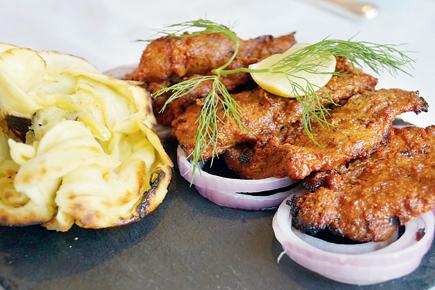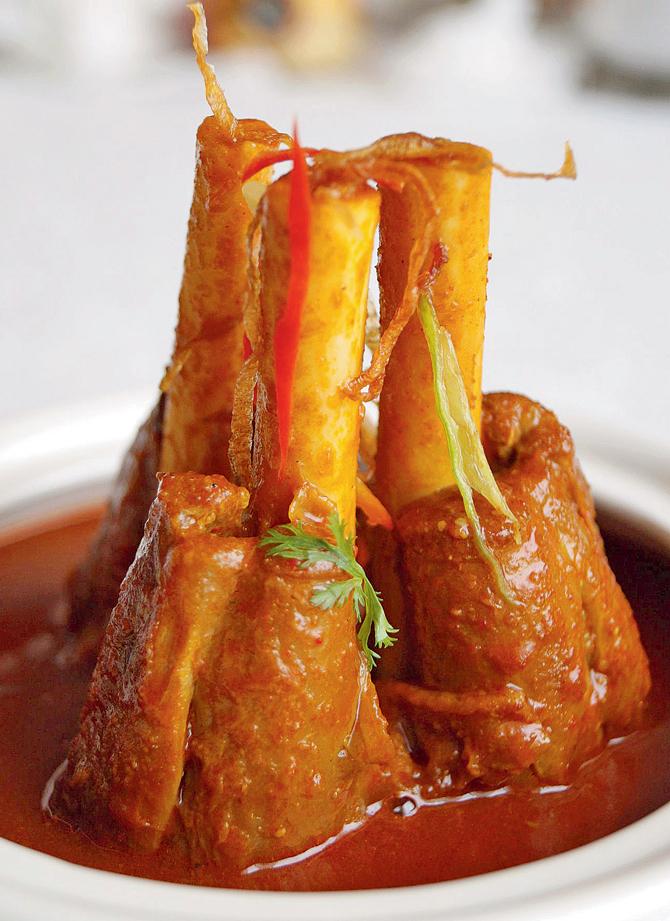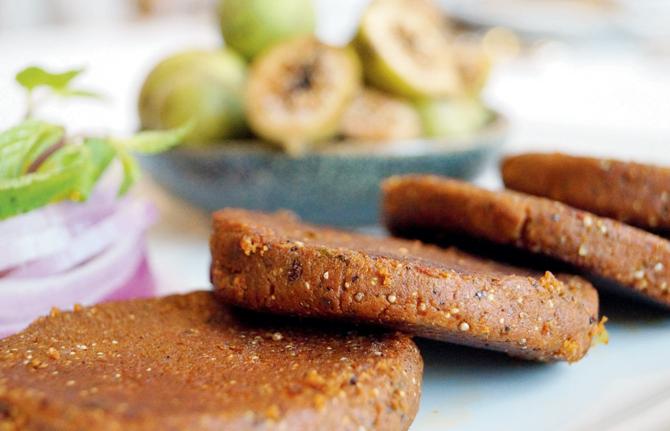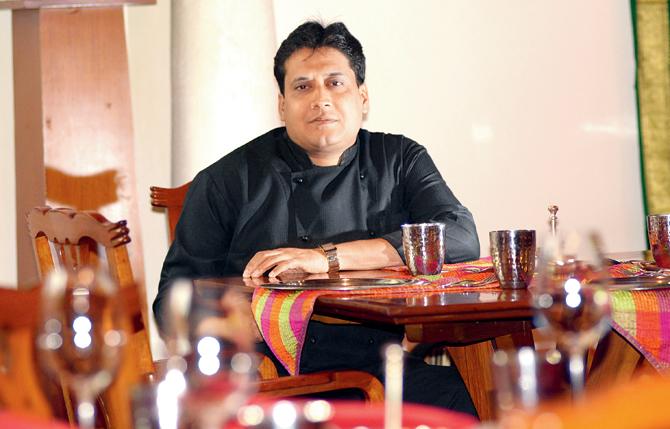There’s more to Rampur than its sharp chaku and surreal poetry. As two food festivals come to the city, Phorum Dalal finds out how the cuisine’s simple flavours stand apart from its richer nawabi cousins of Awadh and Lucknow

Tat ke Gosht
It is the formidable single-edged Rampuri chaku and the lilt of Mirza Ghalib’s poetry that come to mind when one thinks of Rampur, a town nestled 150 km away from Delhi and 350 km from Lucknow, one of the most popular sub-roots of this Muslim kingdom.

Tat ke Ghosht at Sahib and Kipling Room
But those aren’t Rampur’s only raison d’êtres. The town holds the door into the kitchens of a lesser-known Mughlai cuisine, too. In them, you will neither encounter overpowering fragrances typical of Lucknowi food, nor taste the ghee-laden, creamy textures of Awadhi food. What you find in Rampuri cuisine are dishes made in clay pots and spiced with unrefined, khada (raw) masalas, dal chini (cinnamon) sandalwood and pili mirch (yellow chilli), a local favourite.

Rampuri Nalli Ka Korma
Rampur’s glorious culinary history dates back to 1774, when its leader, Faziullah Khan, founded the state. Established under the presence and protection of British Commander, Colonel Champion, the region provided a safe and open-minded atmosphere for artistic development. To take advantage of these liberties, an abundance of cooks and artists from the surrounding area moved to Rampur. For this reason, the Rampuri cuisine is heavily influenced by the Mughlai, Afghani, Lucknowi, Kashmiri and Awadhi cuisines.

Gular Ke Kebab
Connoisseurs of good food
In 2013, Delhi-based writer Neha Prasada co-authored a book, Dining with the Maharajas, on a thousand years of culinary traditions of the maharajas. During her research on Rampuri cuisine, she interviewed princess Naghat Abedi, whose father, Murtuza Ali Khan, was the last nawab of Rampur. “Rampuri food is heavy on non vegetarian delicacies especially red meat based preparations. While it has many influences and similarities between Lucknowi food and the food from the kitchens of the Mughal courts of Delhi it has its own distinct flavours. As compared to the Awadhi food of Lucknow it is less fragrant and there is a use of whole spices. Also the dishes lack the sweetness that is often associated with the food from Lucknow,” says Prasada.

Pic/Pradeep Dhivar
Trade secrets
The yesteryear delicacies made in the royal kitchens remain popular, thanks to chefs who carry forward the knowledge of their forefather khansamas.
Lucknow’s Mujeeb ur Rahman’s forefathers were khansamas in Nawab Wajid Ali Shah’s family sometime in the 17th century. “My grandfather was a khansama till the age of 70, but my father became an electronics engineer. He even made me pursue an MBA, but my heart lay in cooking. My grandfather trained me in the art of nawabi cuisine,” says the 41-year-old Lucknow-based researcher, who now curates food festivals across the world.
Rampuri cuisine, says Rahman, has many distinct dishes that reflect the skill and expertise of its khansamas. Tar Korma, a Nihari dish whose gravy is a rich reduction of its lamb stock, is one such delicacy. “Even Rampuri desserts, such as Mirch Ka Halwa, which is made from capsicum, Adrak (ginger) Ka Halwa and even an Aloe Vera Halwa, are made with precision and age-old techniques,” says Naved Sayyad, executive chef, Orchid Hotel, which is hosting a Rampuri food festival with Rahman.
Kebabs, rotis, dal Kebabs are inseparable from nawabi cuisine and every region, be it the North West Frontier, Hyderabad or Lucknow, has its own version. Rampur offers Sambhal ka Seekh, which is a minced meat kebab marinated with coriander seeds, and ginger on skewers. Nayaab Tandoori Champ — lamb chops marinated with spices — are indigenous to this area, too. On the vegetarian front, Kathal ke Kebab is made of jackfruit.
The royal dal, made of toor dal (yellow pigeon peas), is boiled in milk, with a tadka of pure ghee. “This dal is pale yellow or whitish in colour. Legend says that during the Mughal rule, khansamas melted gold coins and added it to the dal,” says Rahman.
Another popular dal in Rampur is Mash ki Dal, which is the white urad dal prepared dry with fried onions, ginger and fresh coriander, adds Prasada.
Interestingly, it was Babur who introduced the tandoor to India as he didn’t quite take to the rotis in the subcontinent. It was only after that the Indian bread underwent various makeovers. Some royal households even made a single roti made of 20 kg of flour. “In Rampur, they also make a Khameer Roti, which is made using yeast. A distinct innovation of the royal Rampur cuisine is Badam Ki Roti. Lest you think that the roti was simply stuffed with almonds, let me tell you that the flour itself was ground almonds!” says Sayyad with fascination.
A royal khichdi
Sayyad reveals how, in a bid to outdo each other, khansamas often turned kitchens into labs. “Chefs used many camouflage dishes, and one such Rampuri dish is the khichdi. The cooks carved grains out of almonds and pistachio,” he adds.
In those times, eating was a ritual in itself, according to Kinny, who is hosting a Rampuri festival at Sahib and Kipling Room.
I admire how the Rampuri cuisine used simple ingredients such as Gullar (white fig), Nadru (lotus stem), kathal (jackfruit), pineapple and amla. This simplicity leaves a royal taste on your palate,” he adds.
Rampuri menu at The Sahib Room and Kipling Bar, Palladium Hotel, Lower Parel is on till April 10 (dinner only)
Call: 61628422
Today is the last day of festival at The Orchid, Vile Parle East (dinner only)
Call: 6164040
 Subscribe today by clicking the link and stay updated with the latest news!" Click here!
Subscribe today by clicking the link and stay updated with the latest news!" Click here!









